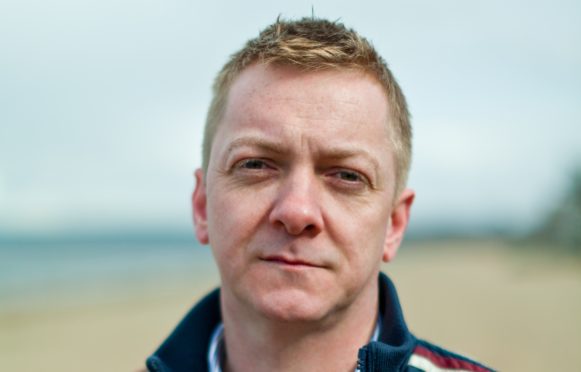Doug Johnstone admits he had a rather strange, circuitous route to becoming an author. Growing up in Arbroath, he went to Edinburgh University to study physics, eventually getting a PhD in nuclear physics.
“Then,” says Doug, taking up the story, “I worked as an engineer for four years in the defence industry, then quit that to become a freelance music journalist. By then I was around 30, and had been writing short stories in my spare time since school, but it never occurred to me in 1970s Arbroath that being a writer was even a possible career.
“Every writer I studied at school was already dead, and it was only when I read books like Iain Banks’ The Wasp Factory and Trainspotting by Irvine Welsh that I thought it might actually be legitimate to write about my own life and to tell the stories of the people I saw around me.”
Doug’s first novel Tombstoning was published in 2006 although it, and his second book The Ossians, weren’t marketed as thrillers.
“It was only with my third novel, Smokeheads, that I really focused on the thriller elements of storytelling, to tell the fastest and nastiest story I could,” says Doug, revealing that he gleans inspiration from “absolutely everywhere.”
He explains: “Ideas for stories are all around us, and it’s really the job of the writer to shape those ideas into a compelling narrative. I sometimes think writers have story antennae, we pick up stuff from the ether – overheard conversations, small news stories, friends’ tales, other novels or television or other art forms.
“And of course, a lot if it comes from my own experience, warped into something more interesting and dangerous, of course.”
Doug is drawn to the problem-solving element of writing.
“People maybe misguidedly think it’s about sitting around waiting for the muse to strike, but so much of writing a novel is about the logistics – working out how the different characters, settings, scenes, motivations and plot points all interact to make something that hopefully looks seamless to the reader, but in fact took a ton of work,” explains Doug.
“Maybe it’s my scientific background, but I love that process of shaping the work into something that makes sense and has its own internal veracity.”
Shutting himself in his loft, with no windows and no distractions, he writes in the mornings in short, sharp bursts.
“I would hope to write something around 1,500 words a day when I’m doing the first draft, then there’s a whole heap of redrafting to do before it gets sent off to my agent and editor,” he says.
“I’ll sometimes go back to writing fiction after lunch, but more often I answer emails, do publicity stuff, journalism, teaching and all the million and one other things that writers usually do to make ends meet and keep their publishers happy.”
Busy writing a couple of screenplays at the moment, and recording some new songs (music is another of his passions), he has also written the start of a new series of books, a first for him, as until now he’s only written standalone thrillers.
“M 10th novel, Breakers, is out on ebook in March and in paperback in May,” he reveals. It’s about a family of housebreakers in Edinburgh, and the central character is a teenage boy bullied into burglary by his older siblings, and looking for a way out.
“The idea came many years ago when we were burgled, and it stewed away in my brain for a long time before bubbling to the surface. But it’s hopefully an empathetic look at the more deprived areas of our society, which sometimes get overlooked in fiction.”
Breakers, published by Orenda Books, costs £5.99 for the ebook and £8.99 for the paperback.










